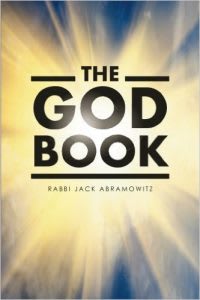57. The Narrative Portions of the Torah
If there’s one thing in the Torah that has been misunderstood, the Rambam tells us, it’s the narrative portions. These sections contain profound wisdom, yet many people consider them to be without value. [III, 50] After all, what possible use could we have for such things as the names of Noah’s descendants and the lands they settled (Genesis 10) or the chronology of Edomite kings (Genesis 36)?
The Talmud in tractate Sanhedrin (99b) tells us that the evil king Menashe (whose reign is described in II Kings chapter 21) used to hold gatherings in which he would disparage the narrative sections of the Talmud, saying thing like, “Didn’t Moses have anything more important to write than ‘the sister of Lotan was Timna?’” (This information appears in Genesis 36:22.)
In truth, every narrative serves a greater purpose. Different sections might be intended to teach us religious principles, impart moral teachings, or help us to rectify injustices. The Rambam provides several illustrations.
One of the most basic principles of Judaism is that God created the universe out of nothing and that all mankind is descended from a common ancestor, Adam. From the time of Adam to the time of Moshe – about 2,500 years – people would have come to doubt this had more information not been provided. After all, mankind was spread out over the face of the Earth, different races speaking different languages. For this reason, the Torah explains the genealogy of the various nations, explaining who is descended from whom (Genesis 10). It tells us how we came to be spread over the surface of the Earth and how the different languages evolved (ibid. 11).
The accounts of the flood (ibid. 6) and of the destruction of Sodom (ibid. 19) demonstrate that God rewards and punishes mankind based on our actions, which is also a fundamental principle of our faith.
The war of the four kings versus the five kings (ibid. 14) shows us how, with God’s help, Abraham’s small force was able to defeat a militarily superior power. We also see how Abraham risked his life to rescue his fellow and how content he was with his lot, declining to partake in the spoils of war.
The genealogy of Seir (ibid. 36) is important because it actual has legal impact. There is a commandment to eradicate the nation of Amalek (Deuteronomy 25). Amalek was the son of Elifaz and the aforementioned Timna, sister of Lotan. The mitzvah only applies to this particular branch of the family, not to other descendants of Esau. But Seir is also a part of Esau’s family and they were also sometimes referred to as Amalek. Had the genealogy of Seir not been recounted by the Torah, they would wrongly have been included within the parameters of the mitzvah. For this reason, the Torah informs us in detail about the descendants of Esau, since not every Amalekite in name is an Amalekite in fact.
The chronology of the kings of Edom (Genesis 36) likewise has legal ramifications. Israel is commanded not to set an outsider over them as king (Deuteronomy 17). We see that the kings of Edom were all outsiders, since the Torah indicates each one’s homeland (Zerach of Batzra, Samlah of Masreika, Chusham of the land of the Temanites, etc.). Being fairly close in time and geography, the generation that received the Torah would have known the reputations of these kings and they would understand how foreign rulers oppress and abuse native populations. The chronology of the Edomite kings therefore holds a cautionary tale relevant to keeping a mitzvah of the Torah.
One final reason the Rambam gives us for narrative portions is the different nature of the eyewitness and the audience. The one hearing an account might think that certain details are irrelevant or redundant but these tidbits might be essential from the point of view of the one talking. Take, for example, the list of all the places where the Jews camped in the wilderness (Numbers 33). This is necessary to appreciate, of all things, the miracle of the manna that fell daily. The Torah describes the wilderness as being a place of snakes and scorpions, without water (Deuteronomy 8:15), with no produce (Numbers 20:5) and very remote (Jeremiah 2:6). These details are necessary so that future generations shouldn’t think that the wilderness was fertile, that it was close to settled areas where they could get food, that the manna was a naturally occurring phenomenon of the area, or anything else that would detract from the magnitude of the miracle. To drive this point home, the Torah enumerates all the places where the Jews camped during their forty-year stay in the wilderness. In this way, the reader can ascertain for himself how inhospitable the conditions were and therefore how great a miracle the manna must have been.
Similarly, every passage that people dismiss as unimportant actually serves a valuable purpose. The Sages explain the verse “It is not an insignificant thing for you” (Deuteronomy 32:47) to mean, “It’s not an insignificant thing. If it seems like it is – that’s on you.”
The God Book – now available from OU Press!

